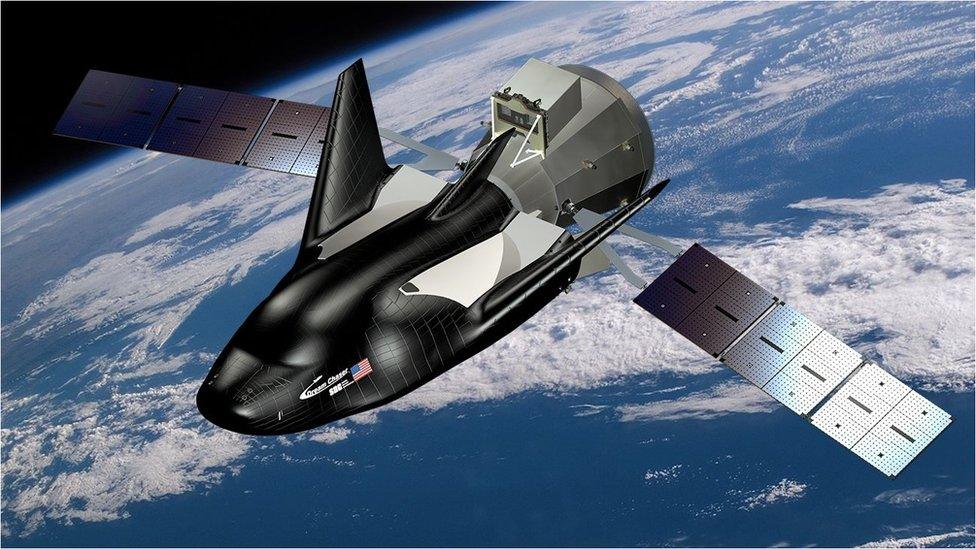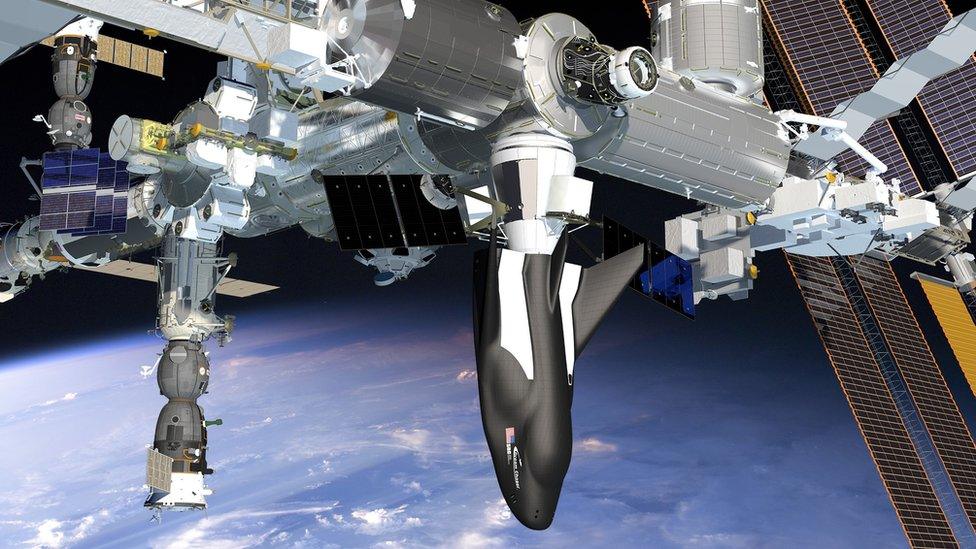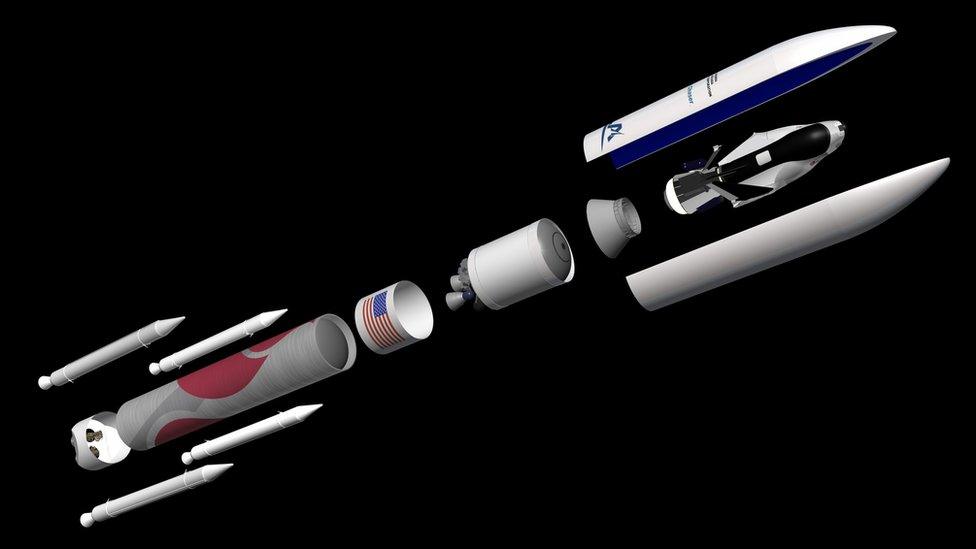Spaceplane gets a ride for space station trips
- Published

Artwork: Dream Chaser is a reusable spaceplane that can land on a runway
The Dream Chaser spaceplane, which will ferry cargo to the International Space Station (ISS), now has a rocket to launch on.
Sierra Nevada, the private company that builds the spaceplane, has chosen the Vulcan rocket as its ride into orbit.
The company hopes to start launching missions by 2021, to deliver supplies to astronauts on the ISS.
Neither the Dream Chaser vehicle, nor the Vulcan rocket, has yet flown to space.
Sierra Nevada was recently awarded the contract by Nasa to re-supply the ISS.
It joins two other private companies that already ship cargo and experiments to the station - SpaceX and Orbital ATK.
The Vulcan Centaur rocket, built by United Launch Alliance (ULA), is currently in production.
Under its Nasa contract, Dream Chaser has to fly a minimum of six missions to the ISS. The first of these will serve as the Vulcan Centaur's second "certification flight" - which will validate the rocket.

Artwork: The spaceplane will carry supplies and experiments to the space station

Artwork: The heavy-lift Vulcan rocket is currently in production
"Our first launch is 2021, so we can't wait to have the first successful mission," said Sierra Nevada Corp's chief executive Fatih Ozmen at a news conference in Louisville, Colorado.
"[Dream Chaser] is the only privately-owned, commercial spaceplane in the world that exists that is runway- and landing-capable and reusable."
Dream Chaser will deliver more than 5,443kg (12,000 lbs) of cargo to the space station, remaining attached for up to 75 days as an orbiting laboratory. When the missions end, the vehicle will return through the atmosphere and land at Nasa's Kennedy Space Center in Florida.
The Vulcan Centaur will use BE-4 engines developed by Amazon founder Jeff Bezos's space company Blue Origin.
Tory Bruno, chief executive of ULA, said the Vulcan was currently "on time" for its journey to the launch pad in 2021. But he added that if a delay did arise, ULA would use its Atlas V rocket as a back-up.
Dream Chaser was designed as a crew vehicle. Sierra Nevada Corp competed for the Nasa contract to send astronauts to the ISS, under the agency's Commercial Crew Program.
The contract eventually went to Boeing and SpaceX, but Sierra Nevada made it to the final round. And the company still wants the spaceplane to fly astronauts one day.
"The bridge to a crewed vehicle is not that far," said John Curry, programme director for Dream Chaser. "The capability is there and we're more than happy to do it, whether it's for Nasa or for somebody else.
"Crewed missions are coming, we just need to build it and they will come."
Follow Paul on Twitter., external